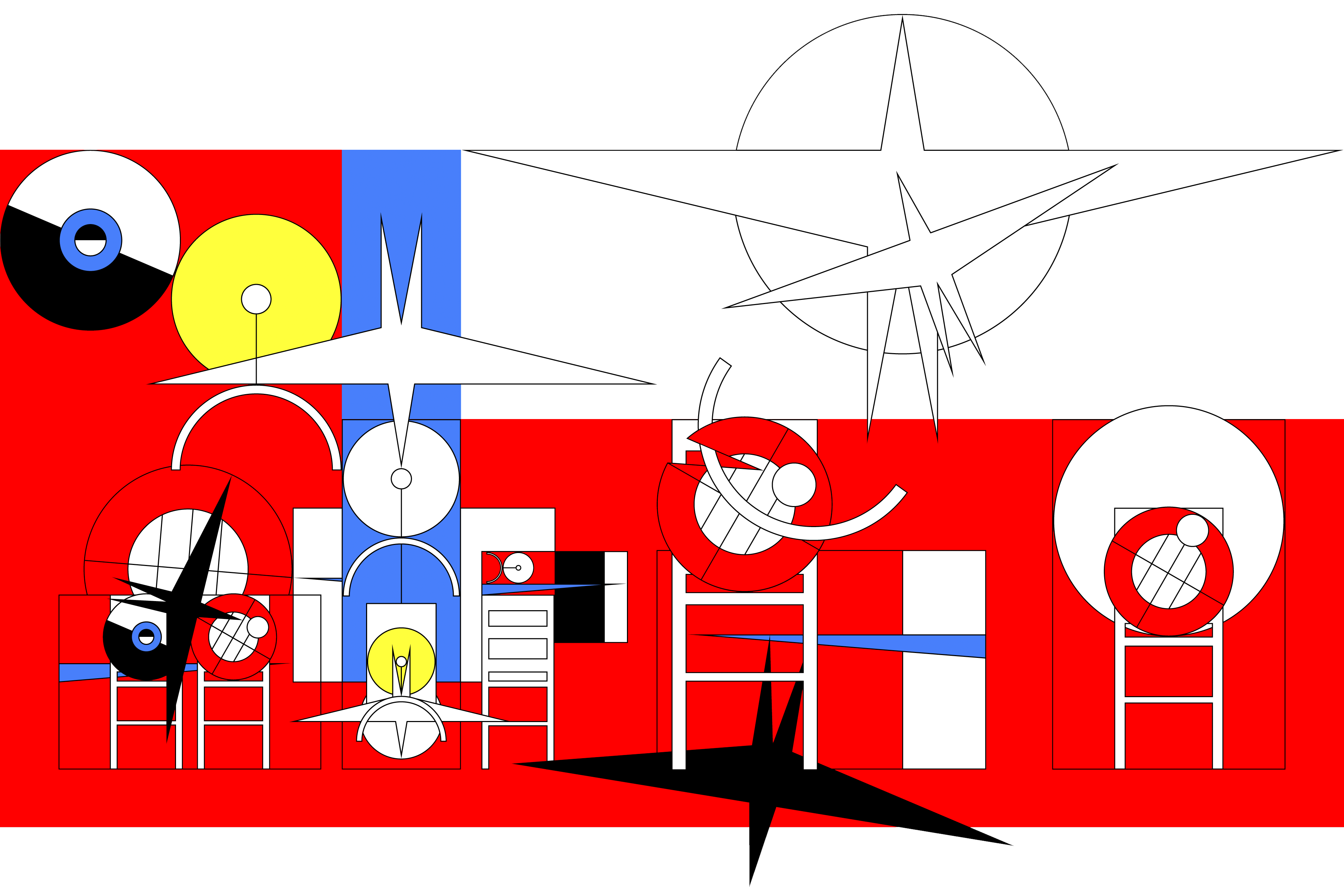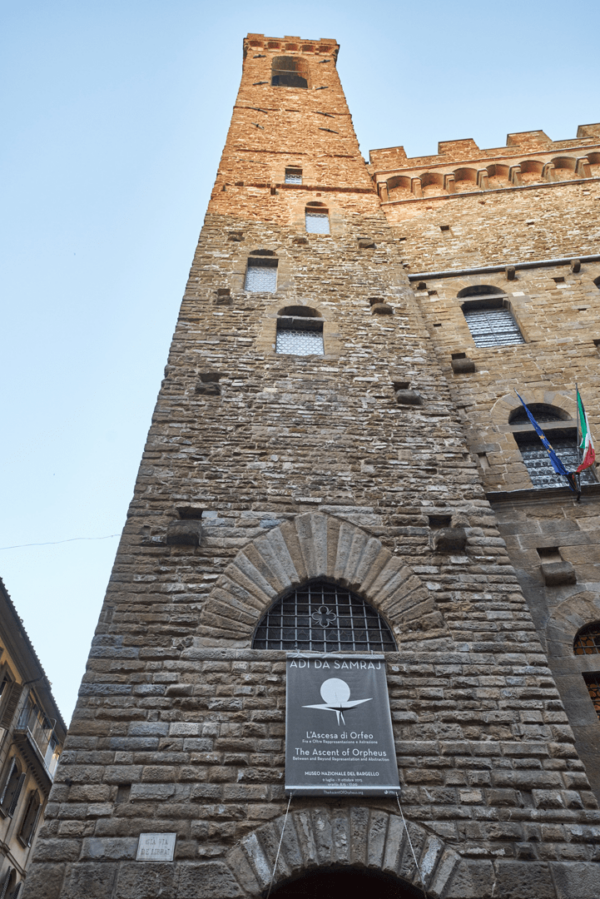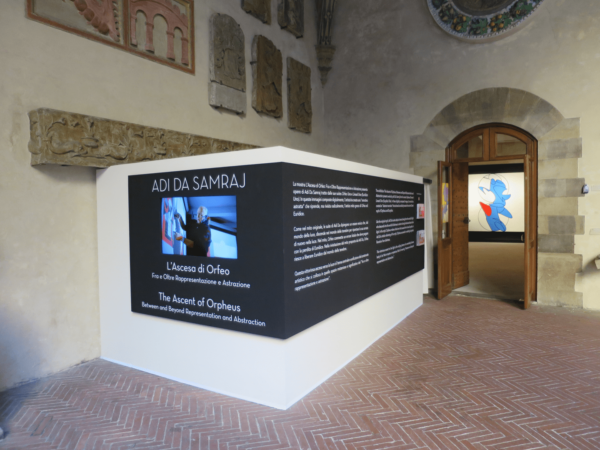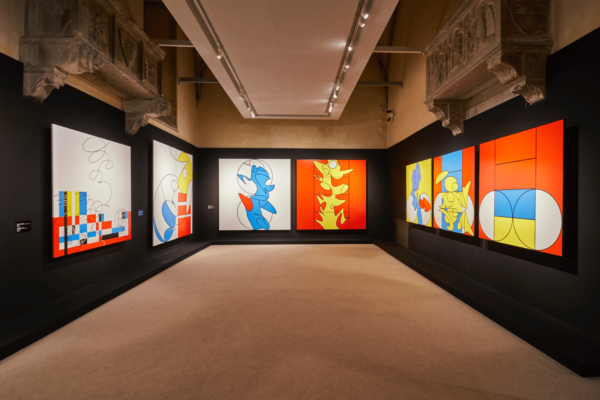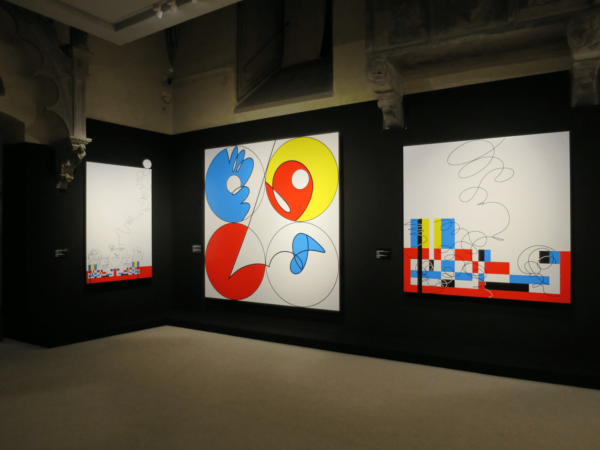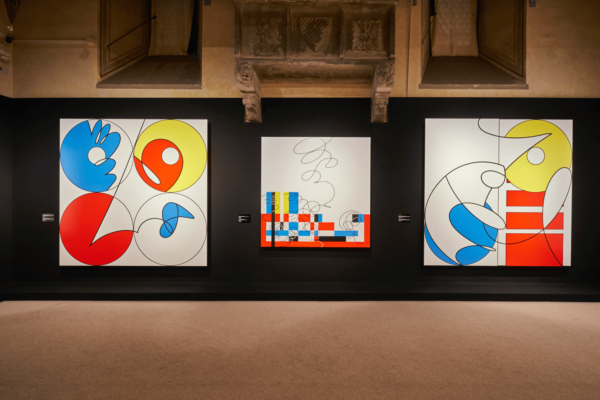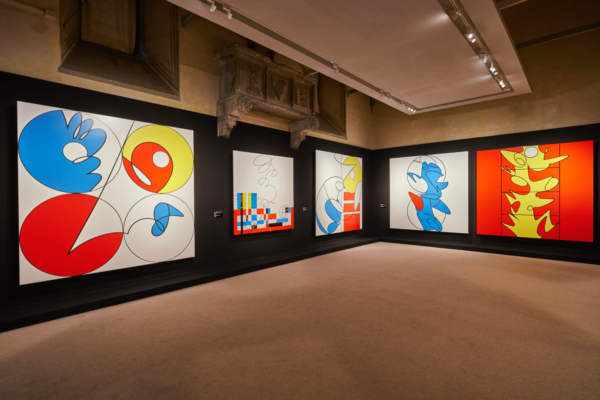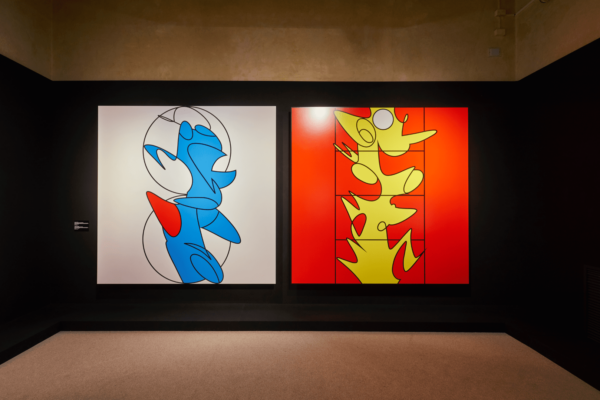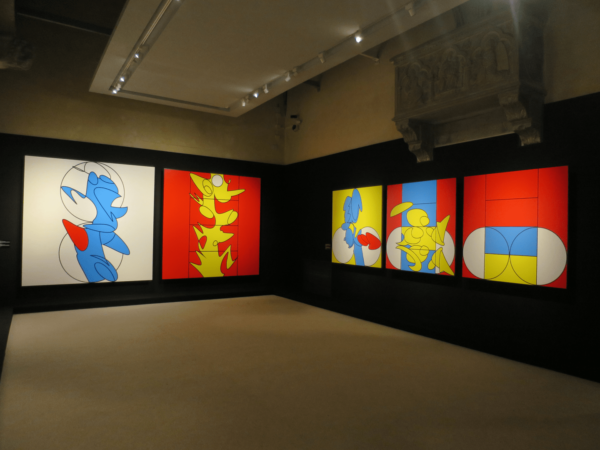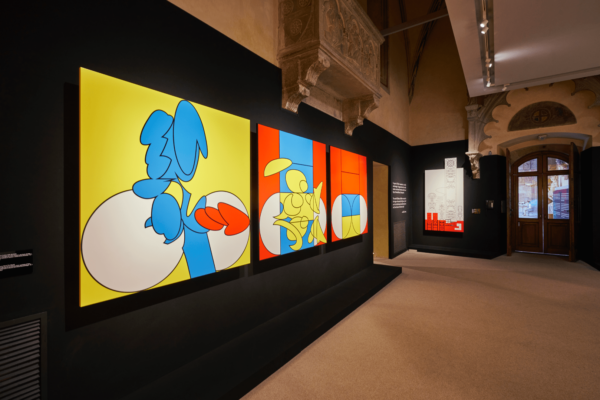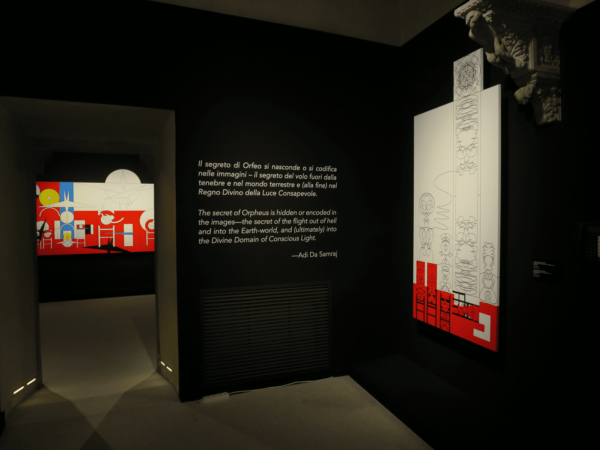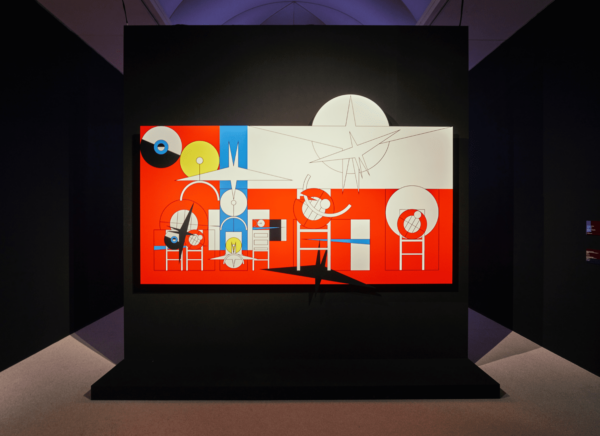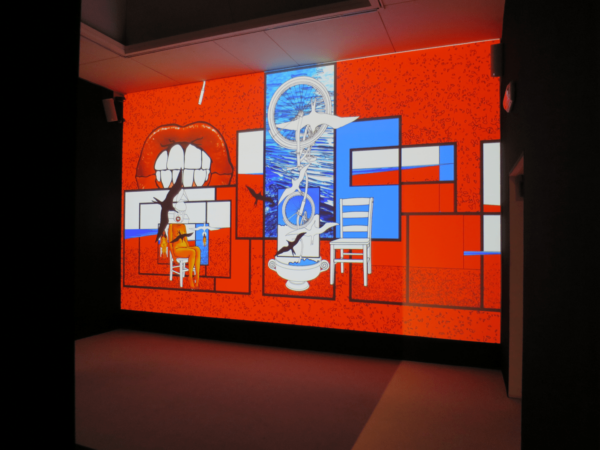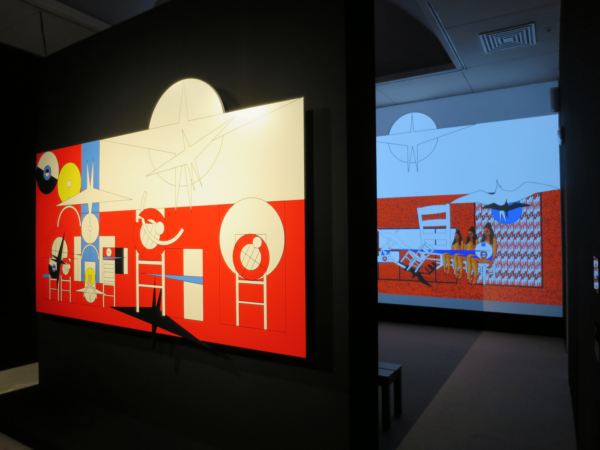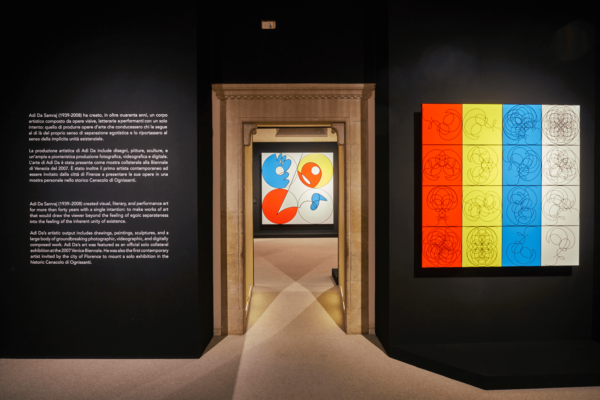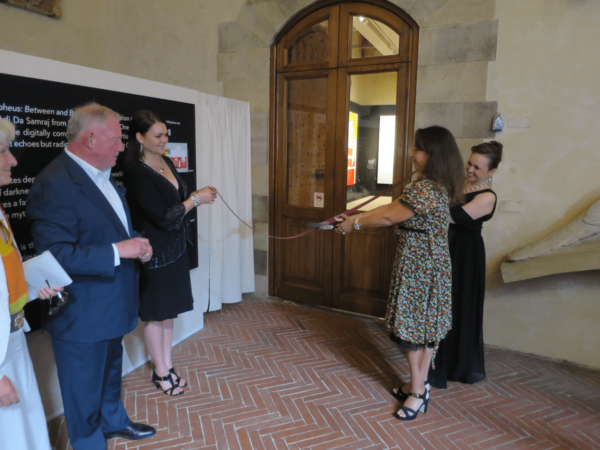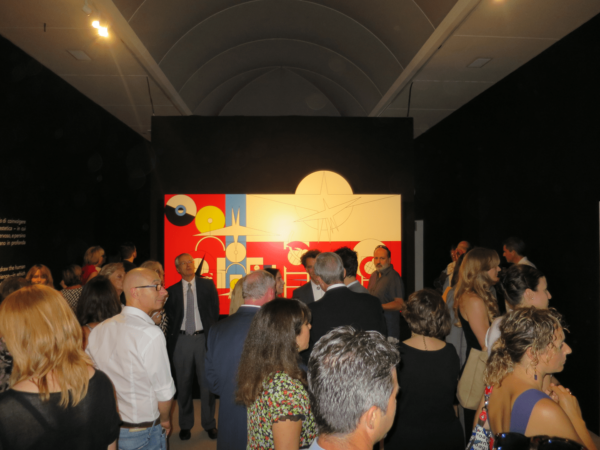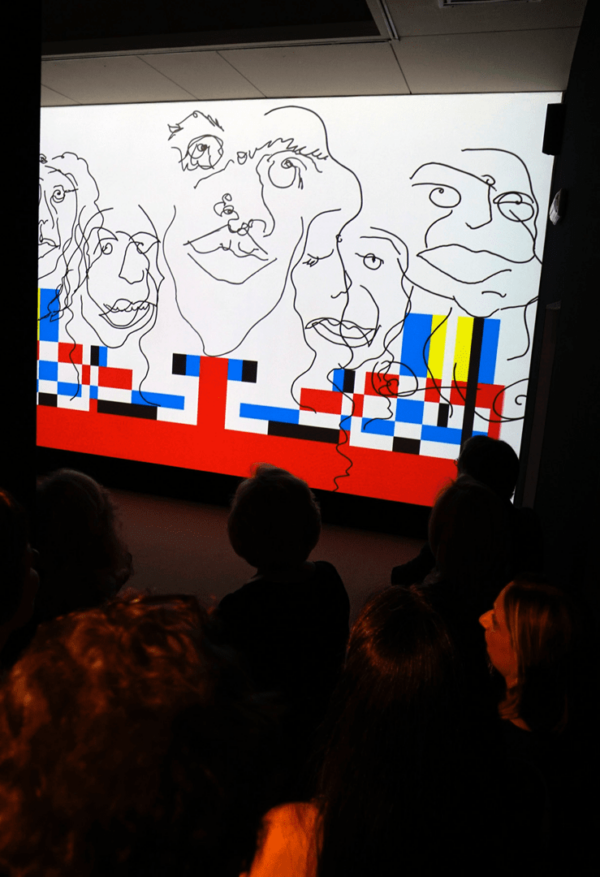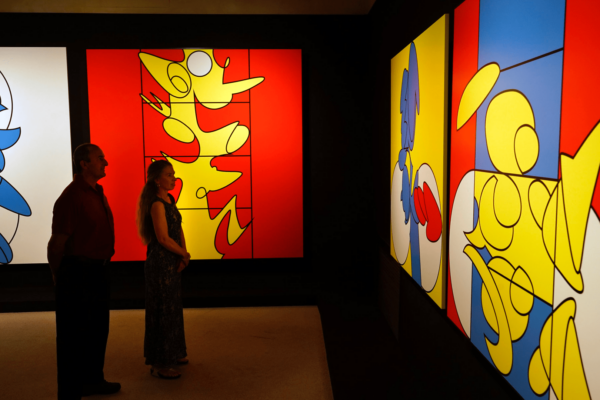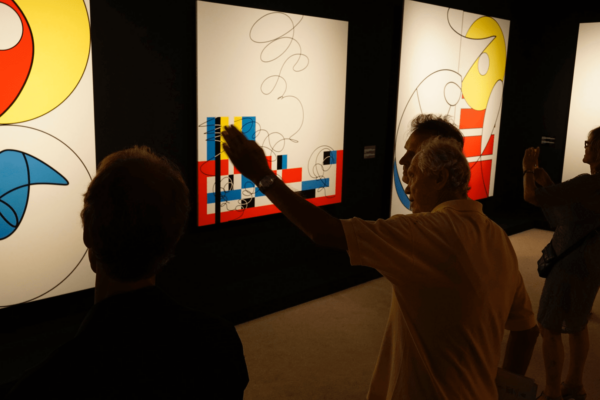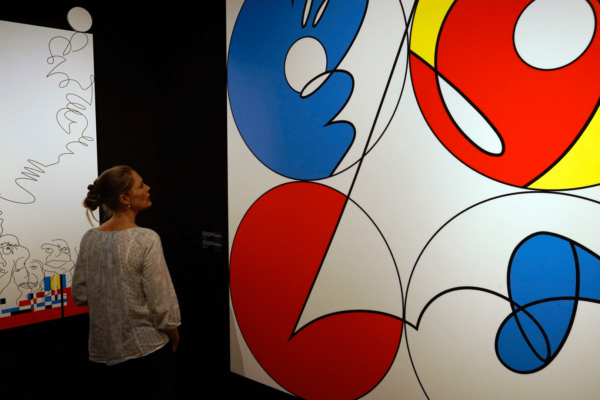Bargello Museum The Ascent Of Orpheus
Via del Proconsolo 4
50122 Florence
For the first time in its 150-year history, the Bargello National Museum hosted a solo contemporary art show, “THE ASCENT OF ORPHEUS: Between and Beyond Representation and Abstraction”, by Adi Da Samraj in two galleries off the Bargello courtyard.
In an unusual bridging of ancient myth and digitally composed large-scale fabrications, the exhibition was Adi Da’s sweeping and at times demanding retelling of the famous Orpheus and Eurydice myth. The exhibit ran from July to October 2015.
Through the nine large-scale pieces and a multimedia projection in the exhibition, Adi Da demonstrated his radical approach to “aperspectival, aniconic, and anegoic” art.
Drawn from his Orpheus One and Linead One suites created in 2007, the digitally composed works, some never shown publicly before, demonstrated the artist’s reach beyond linear perspective and individual “point of view” that have dominated Western art since the Renaissance.
The exhibition was a testament to Adi Da’s advance in what he considered to be the unfinished modernist project of the early 20th-century avant-garde.
Achille Bonito Oliva, the internationally acclaimed Italian art critic and historian who curated Adi Da Samraj’s official collateral exhibition at the 2007 Venice Biennale, notes in his essay in the Ascent of Orpheus exhibition catalog:
The abstraction of Adi Da Samraj is anti-rhetorical and aspires to restore humanity to a state of contemplation and reflection … His abstract images look upon the world from beyond any point of view.
The exhibition coincided with the 750th anniversary of the birth of Dante and opened with collaborative performances of Divina.com by the Florence Dance Company on 9, 10, and 11 July in the Bargello Museum courtyard. The ballet, inspired by Dante’s Divine Comedy, integrated monumental projections of images by Adi Da moving on screen in dynamic interaction with the dancers. The images were also the inspiration for the costume design.
At the core of all of these stories of Orpheus is a descent from the world of light into the natural domain, and a subsequent ascent, or escape, from that domain. The red-and-black space in some of the images of Orpheus One is the realm of difficulty and suffering in which human beings live. However, the evidence in the images of Orpheus One, like the evidence in the myth of Orpheus, suggests another possibility than merely remaining in the realm of suffering—namely, ascent beyond, through the intrinsic transcending of the red-and-yellow field into the white field, or the realm that is free of the darkness made by ego-life.
—Adi Da Samraj
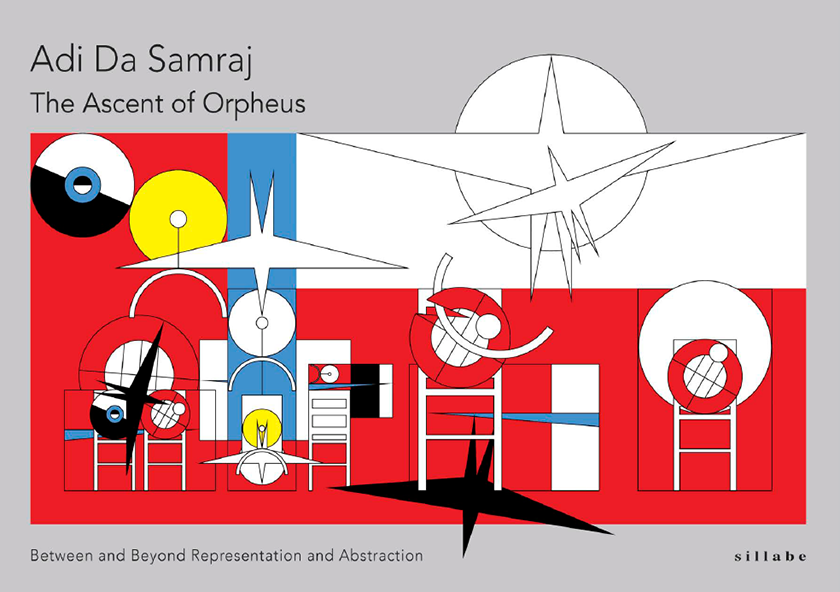
EXHIBITION CATALOG
A catalog of over 100 pages entitled “The Ascent of Orpheus: Between and Beyond Representation and Abstraction” accompanies the exhibition. Offering a visually rich survey of Adi Da’s Orpheus One and Linead One suites, the catalog includes images from the exhibition, numerous additional images from the two suites, as well as commentarial essays on the suites and selections from Adi Da’s own writings on art.
Free download (PDF, 12 MB)
